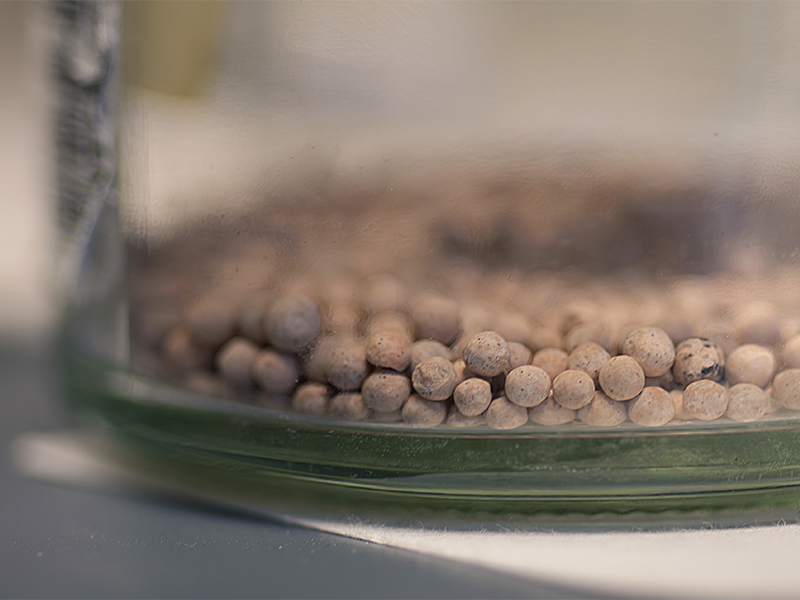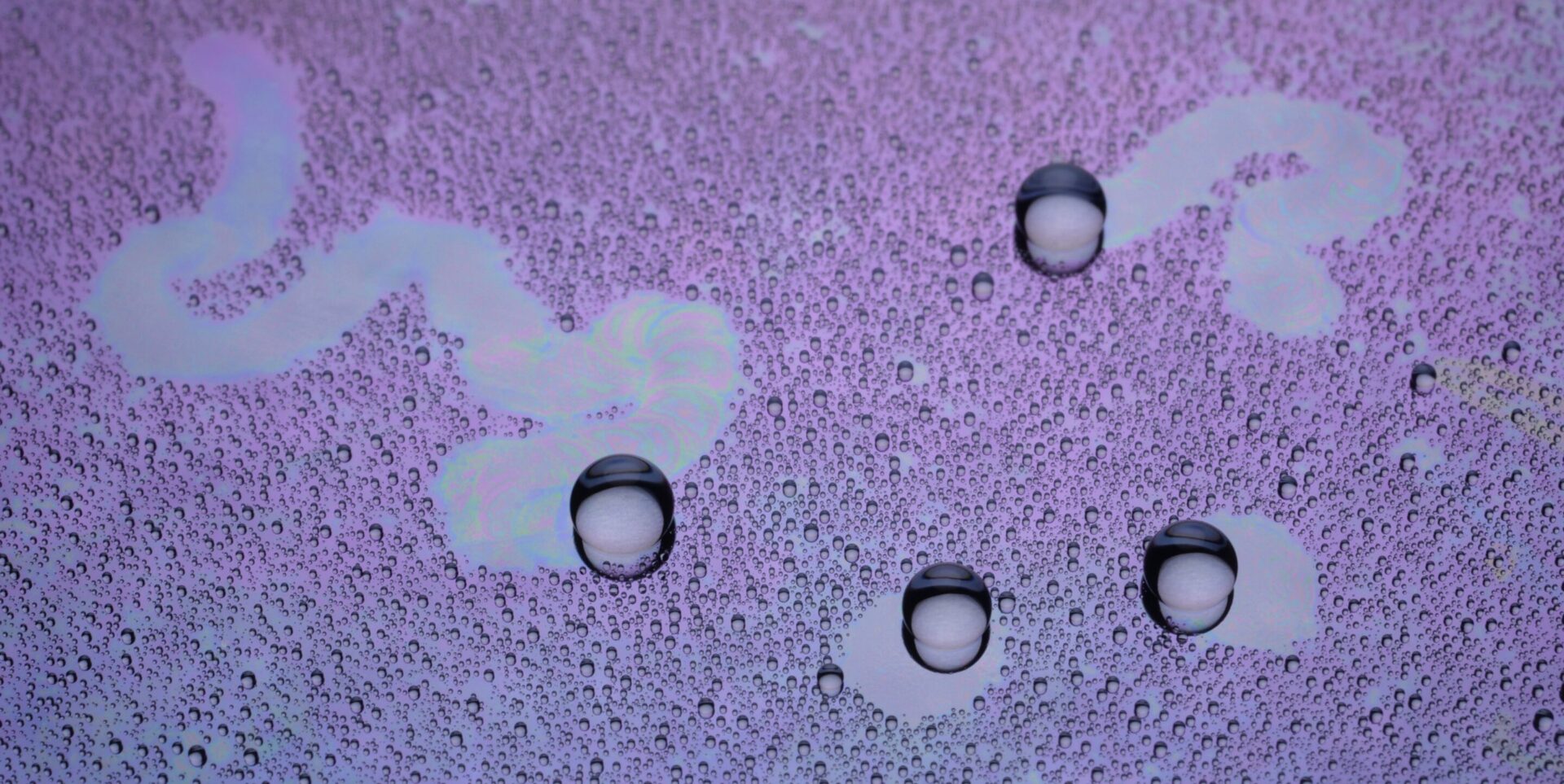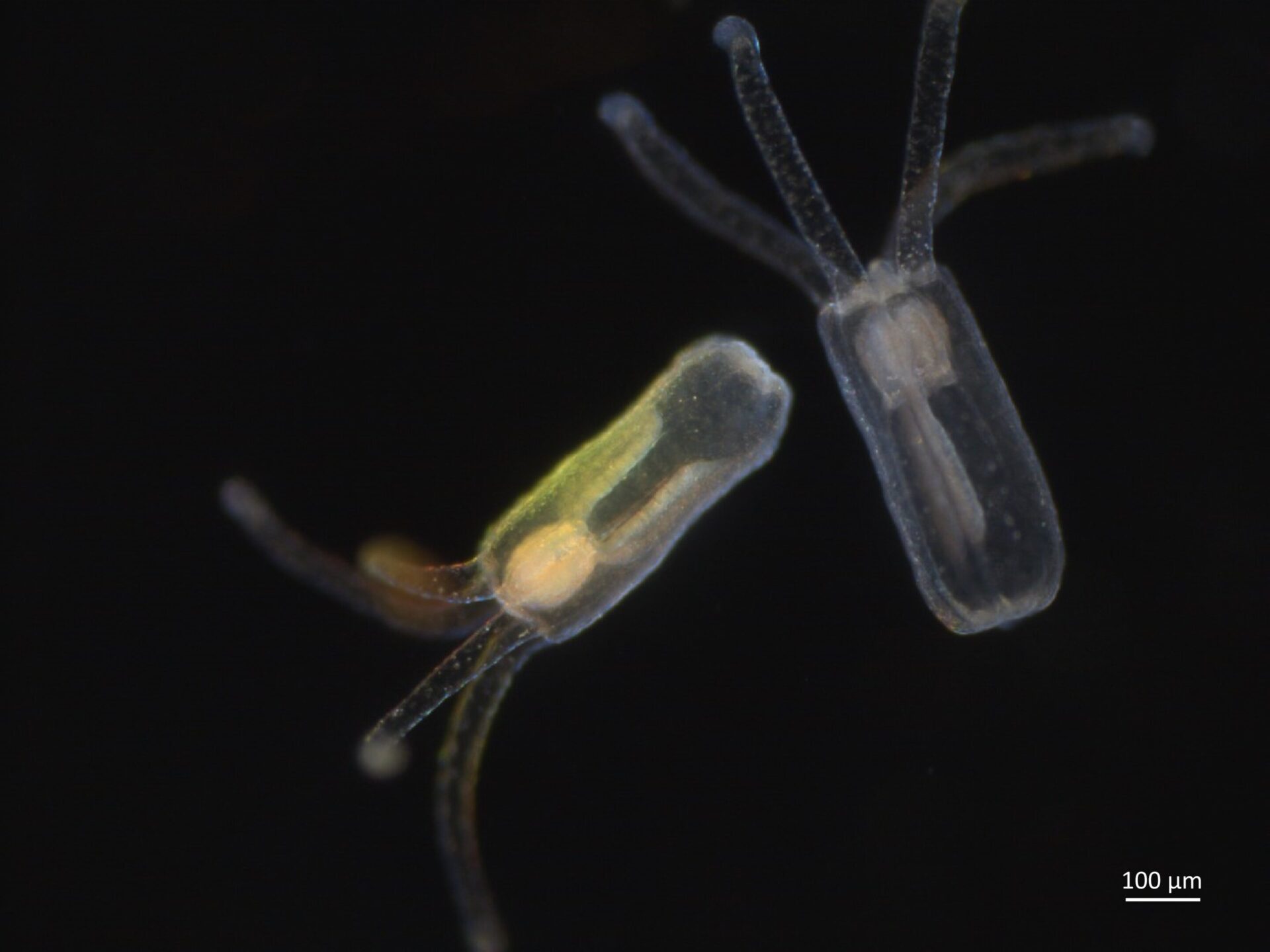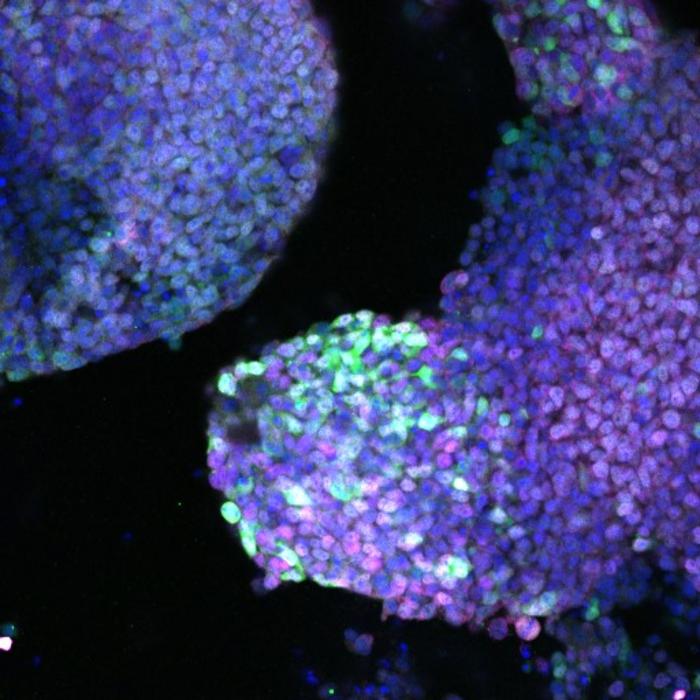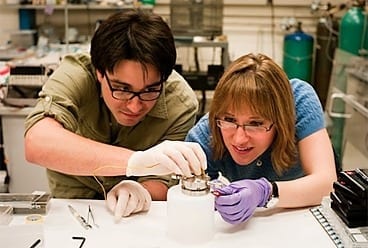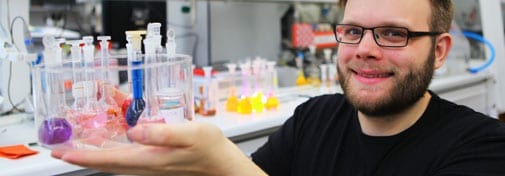
MEDICAL IMAGING
From microscopes to nuclear imaging scanners, imaging technology is growing ever more vital for the world’s hospitals, whether for the diagnosis of illness or for research into new cures. Imaging technology requires dyes or contrast agents of some sort. Current contrast agents and dyes are expensive, difficult to work with and far from ideal. Now, Danish chemists have discovered a new dye and proved its worth against the dyes currently available.
“Our dyes are ten times better, far cheaper and easier to use. The latter I believe, lends itself to expanded opportunities and broadened use, by physicians and researchers in developing countries, for example.” Says Thomas Just Sørensen.
Visual noise blocks correct diagnosis
It might seem odd, but one of the central challenges when imaging cells and organs, is to avoid noise. The agents that make it possible to see microscopic biological structures are luminescent, but then, so is tissue. Consequently, the contrast agent’s light risks being overpowered by “light noise”.
Fluorescent dye competing against fluorescent tissue
Just as the dial and hands of a watch might glow in the dark, tissue becomes luminescent when exposed to light. Tissue and other organic structures luminesce, or lights up, for 10 nanoseconds after exposure to light. The light-life of an ordinary dye is the same – 10 nanoseconds. But triangulenium dyes produce light for an entire 100 nanoseconds.
Extraordinary longevity promises live footage from cells
The long life of the triangulenium dyes means that an image can be produced without background noise. Furthermore, the extra 90 nanoseconds mean that we can begin to deliver a living image of the processes occurring within cells, for example when a drug attacks an illness.
The Latest Bing News on:
Medical imaging
- United Imaging Receives FDA Clearance for Breakthrough 5T MRI Systemon May 1, 2024 at 11:59 am
United Imaging, a global leader in manufacturing advanced medical imaging and radiotherapy equipment, has achieved a significant milestone with the U.S. Food and Drug Administration (FDA) with the ...
- Brain imaging study reveals connections critical to human consciousnesson May 1, 2024 at 11:00 am
In a paper titled, "Multimodal MRI reveals brainstem connections that sustain wakefulness in human consciousness," published in Science Translational Medicine, a group of researchers at Massachusetts ...
- Large language models could impact breast imaging reports classificationon May 1, 2024 at 9:30 am
Use of publicly available large language models (LLMs) resulted in changes in breast imaging reports classification that could have a negative effect on patient management, according to a new ...
- Makati gets 1st AI-powered Medical Imaging System for Cancer Careon May 1, 2024 at 9:01 am
In the photo are, from left, Dr. Dennis Sta. Ana, CEO of Makati Life Medical Center; Paulo Del Prado of Paeonmed; Mayank Nath of Operista; and Dr. Ju Song Xia, CEO, United Imaging. Residents of Makati ...
- Lunit Partners with Radiobotics to Enhance Diagnostic Synergies in AI Medical Imagingon May 1, 2024 at 6:38 am
Lunit enters into a strategic agreement with Radiobotics to distribute Radiobotics' bone fracture detection solution starting from ...
- PocketHealth Announces Free Access to Medical Imaging Records for Patients Across Canada and the U.S.on April 30, 2024 at 11:01 pm
PocketHealth Basic eliminates costs for accessing medical imaging records while empowering patients to actively participate in their health and collaborate more effectively with their healthcare ...
- 3D Medical Imaging Equipment Market is Dazzling Worldwide with Latest Rising Trendson April 30, 2024 at 7:51 pm
The 3D Medical Imaging Equipment market revenue was $$ Million USD in 2016, grew to $$ Million USD in 2021, and will reach $$ Million USD in 2031, with a CAGR of % during 2023-2031.
- 'Seeing the invisible': New tech enables deep tissue imaging during surgeryon April 29, 2024 at 5:45 pm
Hyperspectral imaging (HSI) is a state-of-the-art imaging technique useful for determining the composition of a variety of objects. Specifically, over-thousand-nanometer (OTN) HSI is particularly ...
- Spectrum and Hermes Medical Solutions to offer vendor-neutral softwareon April 29, 2024 at 6:09 am
S pectrum Dynamics Medical and Hermes Medical Solutions have announced a partnership to deliver an integrated solution of the Hermia software with the former’s VERITON-CT scanner.
- Michigan patients, hospitals face longer imaging test waits from shortageon April 28, 2024 at 8:00 pm
Shortages of radiologists and radiology technicians to do X-rays and MRIs are affecting Michigan hospitals and patients, but experts see solutions.
The Latest Google Headlines on:
Medical imaging
[google_news title=”” keyword=”medical imaging” num_posts=”10″ blurb_length=”0″ show_thumb=”left”]
The Latest Bing News on:
Imaging technology
- United Imaging Receives FDA Clearance for Breakthrough 5T MRI Systemon May 1, 2024 at 11:59 am
As the company heads to ISMRM, the world's first whole-body Ultra-High Field MRI officially comes to market. HOUSTON, May 2, 2024 /PRNewswire/ -- United Imaging, a global leader in manufacturing ...
- Purdue-created technology makes 3D microscopes easier to use, less expensive to manufactureon April 30, 2024 at 11:10 am
Liming Chen, who will earn his PhD in mechanical engineering from Purdue in May 2024, operates a 3D microscope, which uses an optical technique called fringe projection to create a high-resolution 3D ...
- First high-resolution 3D nanoscale chemical imaging achieved with multi-modal tomographyon April 30, 2024 at 6:21 am
By exploiting a smart learning algorithm that fuses two microscopy signals, University of Michigan researchers have accomplished high-resolution, efficient 3D chemical imaging for the first time at ...
- 'Seeing the invisible': New tech enables deep tissue imaging during surgeryon April 29, 2024 at 5:45 pm
Hyperspectral imaging (HSI) is a state-of-the-art imaging technique useful for determining the composition of a variety of objects. Specifically, over-thousand-nanometer (OTN) HSI is particularly ...
- RMS Titanic, Inc. Announces July Dates for TITANIC 2024 Imaging and Research Expeditionon April 29, 2024 at 12:44 pm
-Company Unveils Plans to Capture 65K Resolution Images via Two ROVs To Identify At-Risk Artifacts That Can Be Safely Recovered During Its Future Expedition- ...
- Imaging Technique Shows New Details of Peptide Structureson April 29, 2024 at 8:51 am
A new imaging technique developed by engineers at Washington University in St. Louis can give scientists a much closer look at fibril assemblies, stacks of peptides like amyloid beta, most notably ...
- Michigan patients, hospitals face longer imaging test waits from shortageon April 28, 2024 at 8:00 pm
Shortages of radiologists and radiology technicians to do X-rays and MRIs are affecting Michigan hospitals and patients, but experts see solutions.
- TOPDON Unveils State-of-the-Art Thermal Imaging Camera with 9mm Adjustable Lenson April 24, 2024 at 11:55 am
TOPDON, the premier provider of cutting-edge technology and advanced tools for auto repair professionals and enthusiasts, just unveiled its latest in professional grade thermal imaging technology ...
- What is BlueImage imaging technology that may launch with Vivo X100 Ultraon April 24, 2024 at 8:44 am
Vivo introduces BlueImage imaging tech in X100 series with Zeiss partnership. X100 Ultra rumored to feature 200 MP sensor, Snapdragon 8 Gen 3, 5,000mA ...
- State-of-the Art Imaging Technology Reveals Lipid Metabolism Changes in Alzheimer’son April 24, 2024 at 1:41 am
Lipid metabolism is altered in Alzheimer's disease, and a new imaging technology has shown how and revealed a new strategy to target disrupted lipid metabolism with new and existing drugs.
The Latest Google Headlines on:
Imaging technology
[google_news title=”” keyword=”imaging technology” num_posts=”10″ blurb_length=”0″ show_thumb=”left”]

